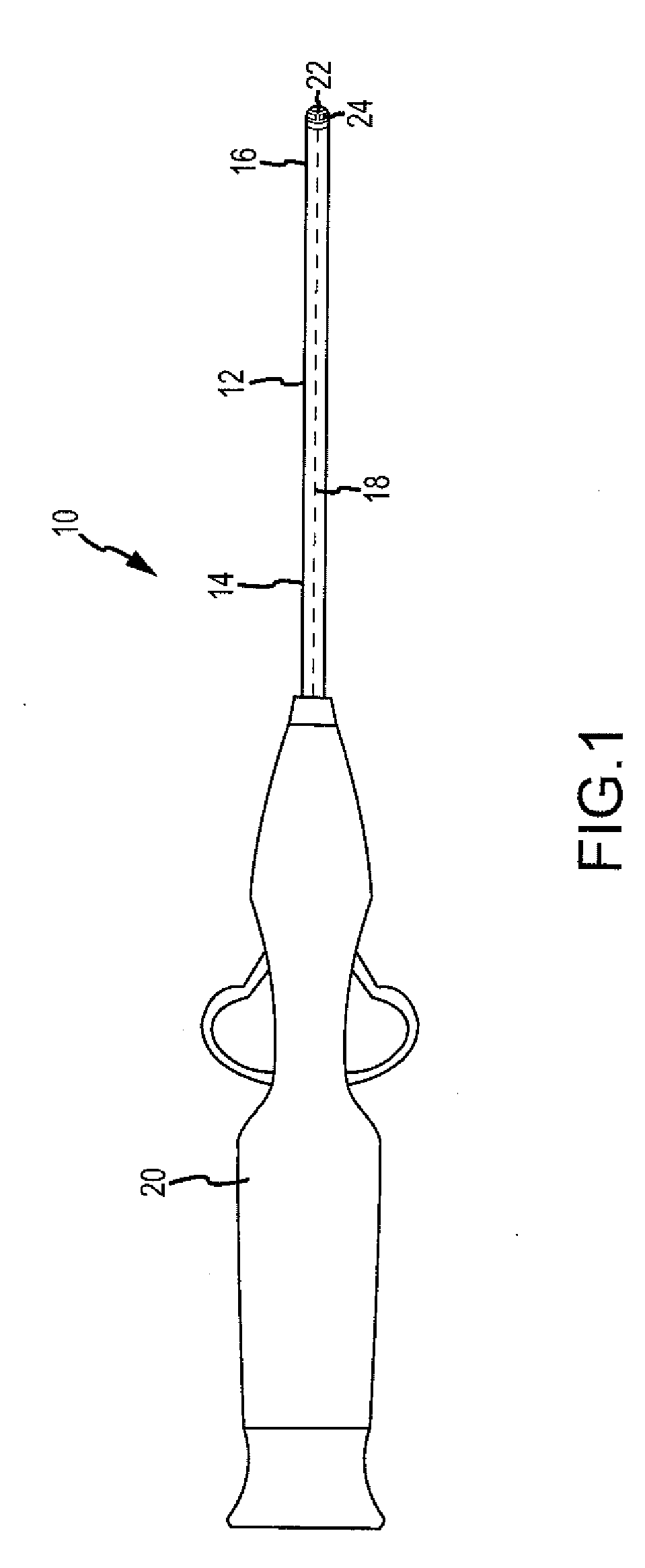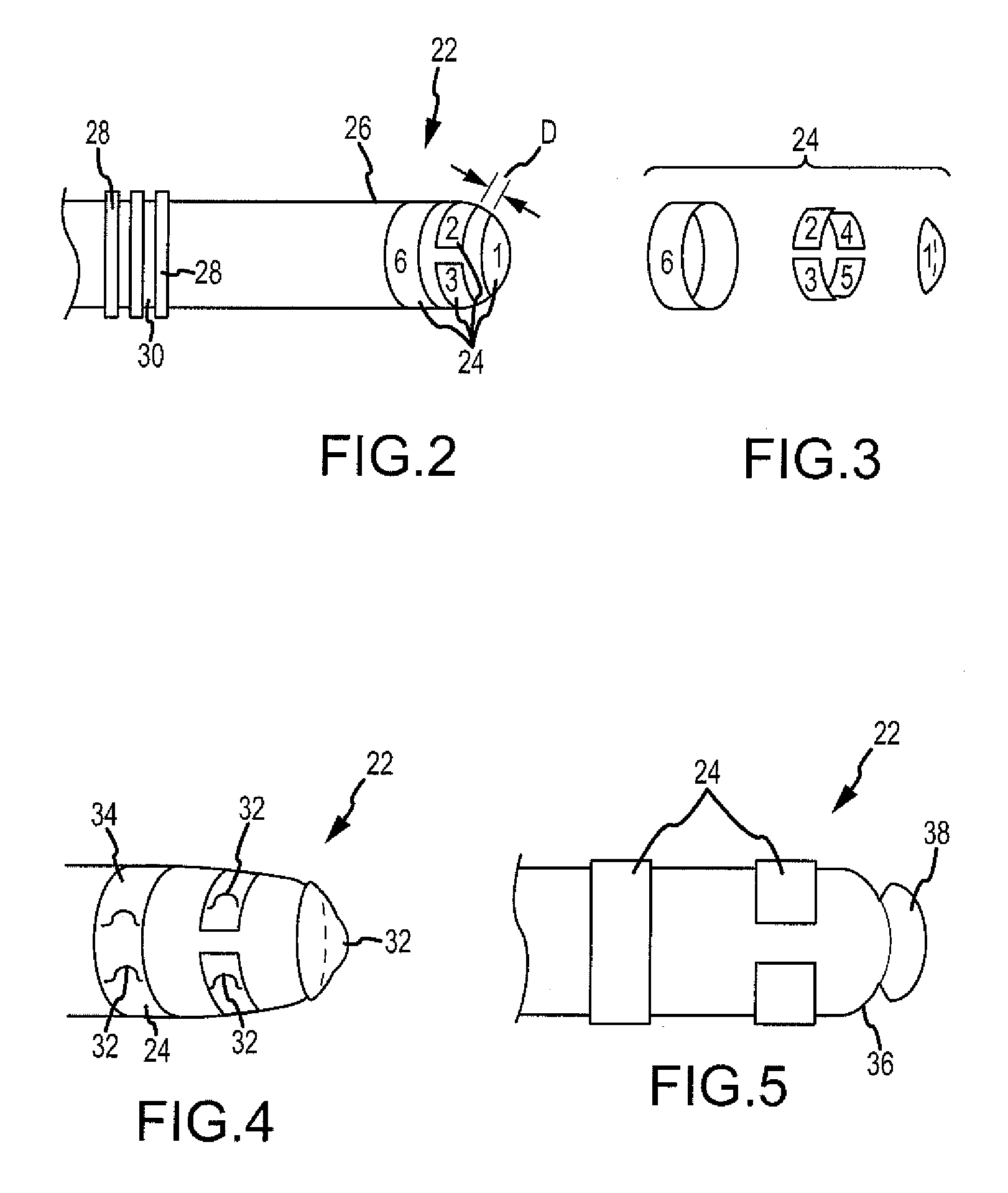Multi-electrode ablation sensing catheter and system
a sensing catheter and multi-electrode technology, applied in the field of multi-electrode ablation sensing catheter and system, can solve the problems of heat damage, difficult to distinguish from electrical noise, and inability to reliably characterize nearby myocardium, etc., to improve electrogram signal sensing, improve tissue contact, and improve the effect of electrogram sensing and application of rf ablation energy
- Summary
- Abstract
- Description
- Claims
- Application Information
AI Technical Summary
Benefits of technology
Problems solved by technology
Method used
Image
Examples
Embodiment Construction
[0031]A catheter and catheter system provided in accordance with the teachings of the invention may be used in various therapeutic and / or diagnostic applications, such as the performance of a cardiac ablation procedure and other similar applications / procedures. Accordingly, one of ordinary skill in the art will recognize and appreciate that the inventive catheter and catheter system can be used in any number of therapeutic and / or diagnostic applications. The catheter and catheter system of the invention may be used for, among other things, ablation procedures on a human heart. Referring now to the figures, FIG. 1 is a fragmentary view of one of the embodiments of a multi-electrode ablation sensing catheter 10 of the invention. The catheter may be an RF ablation or a sensing catheter. The catheter 10 comprises an elongated catheter shaft 12 with a proximal end 14 and a distal end 16 and a lumen 18 therethrough. Additionally, the catheter shaft may include one or more additional lumen...
PUM
 Login to View More
Login to View More Abstract
Description
Claims
Application Information
 Login to View More
Login to View More - R&D
- Intellectual Property
- Life Sciences
- Materials
- Tech Scout
- Unparalleled Data Quality
- Higher Quality Content
- 60% Fewer Hallucinations
Browse by: Latest US Patents, China's latest patents, Technical Efficacy Thesaurus, Application Domain, Technology Topic, Popular Technical Reports.
© 2025 PatSnap. All rights reserved.Legal|Privacy policy|Modern Slavery Act Transparency Statement|Sitemap|About US| Contact US: help@patsnap.com



